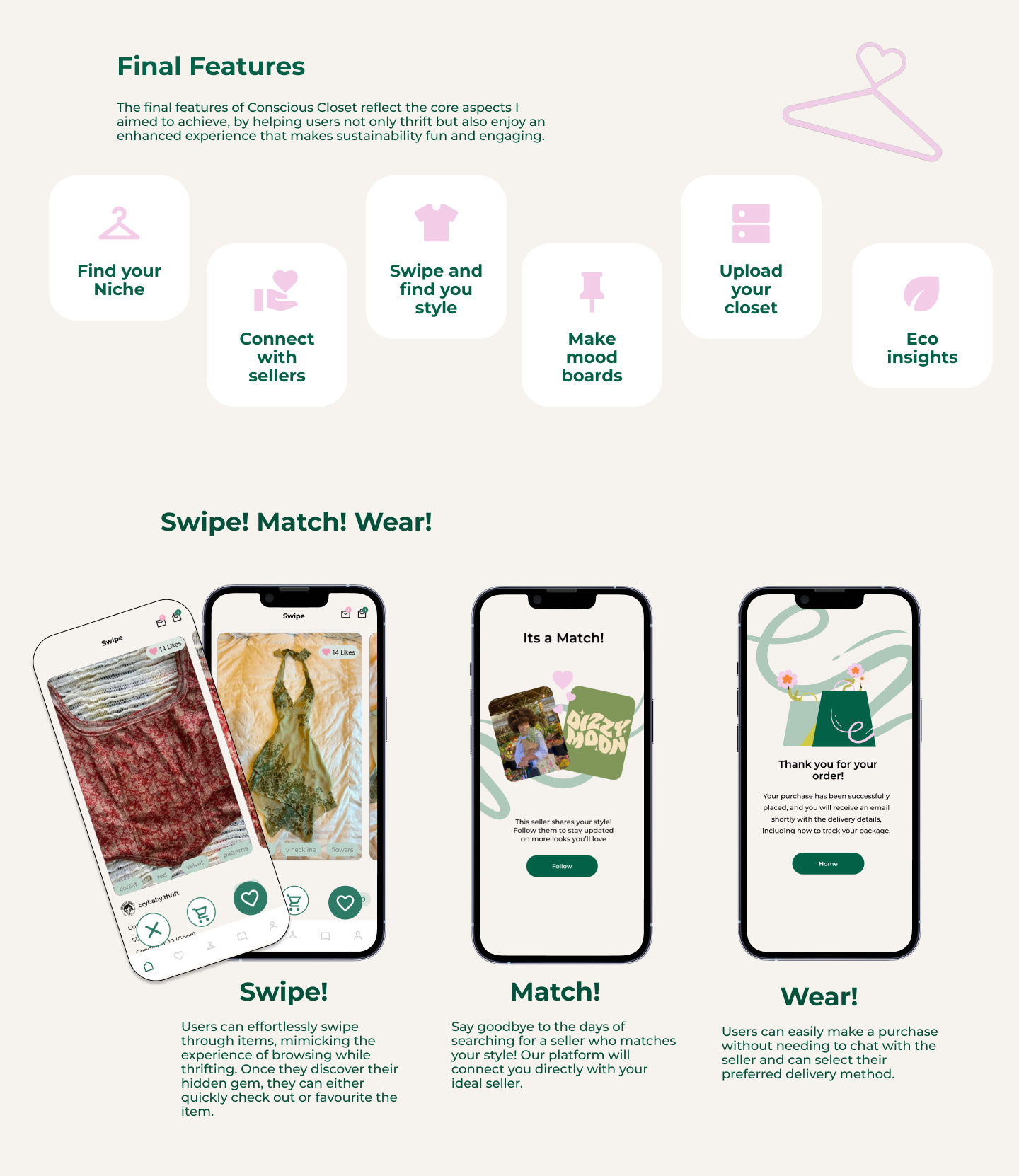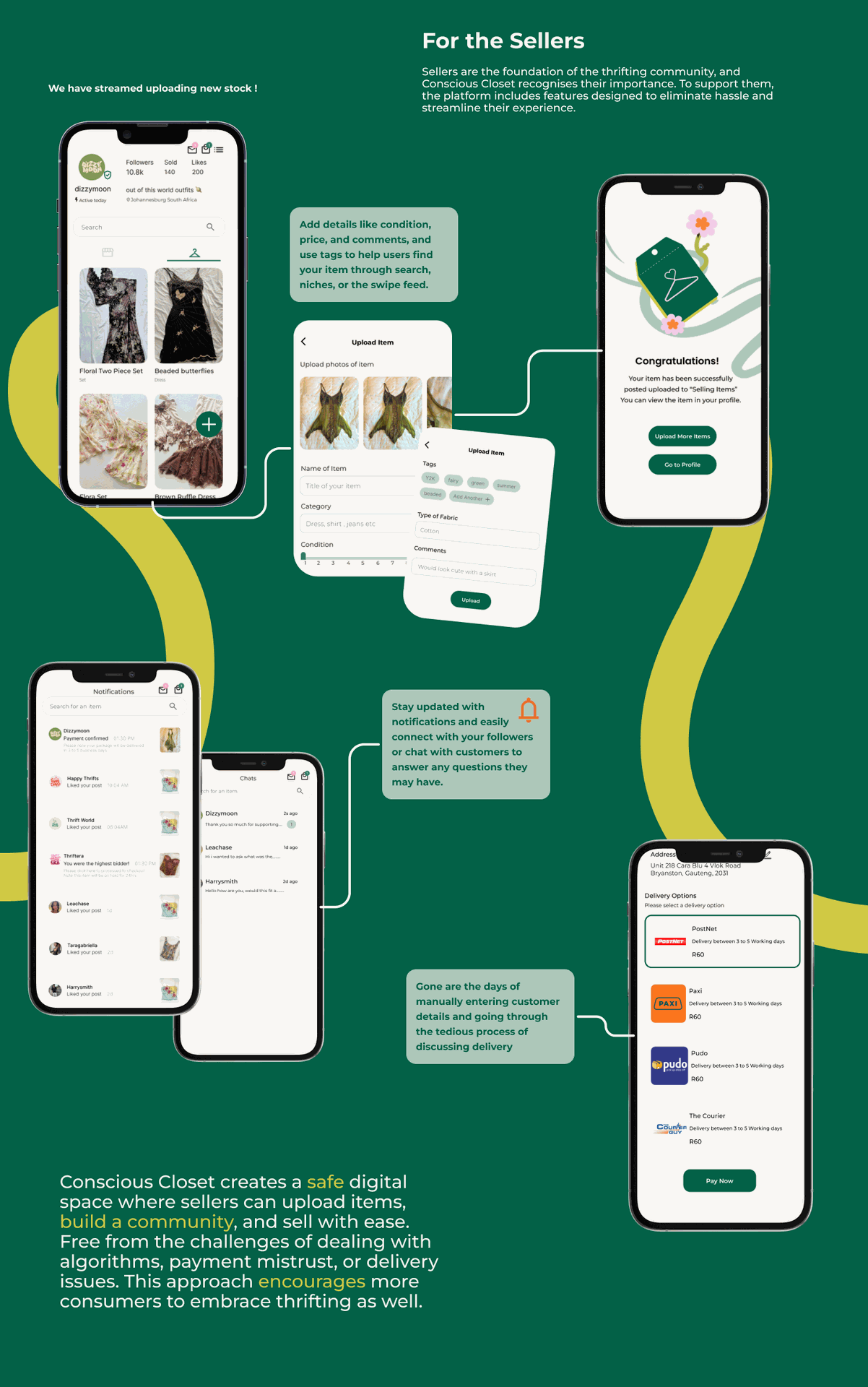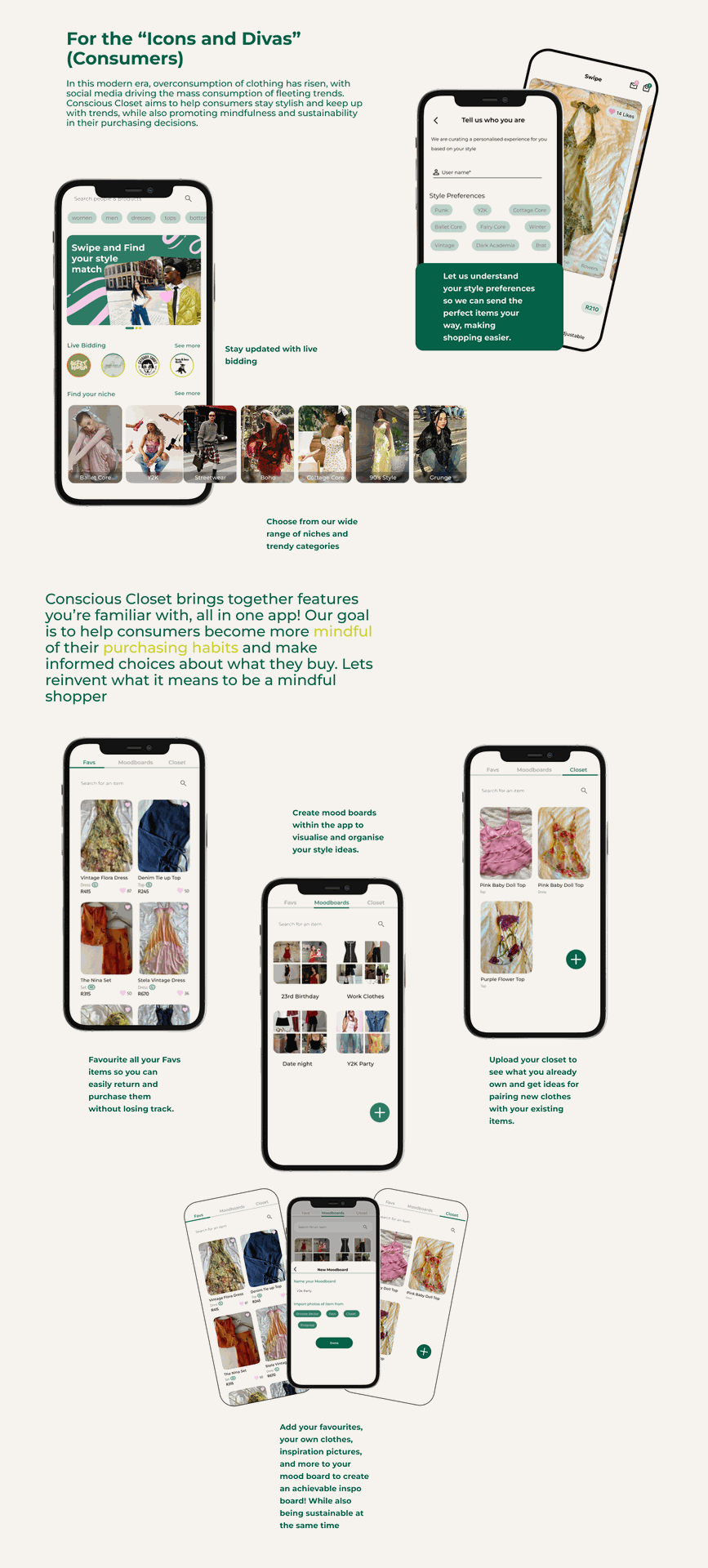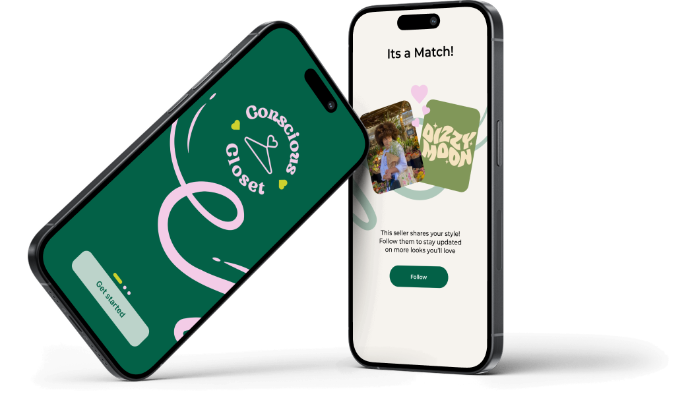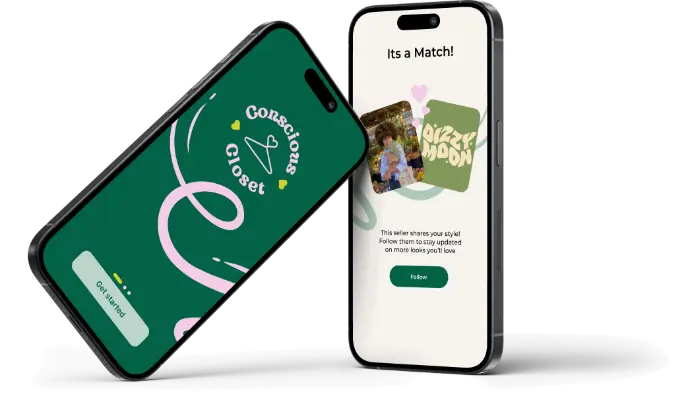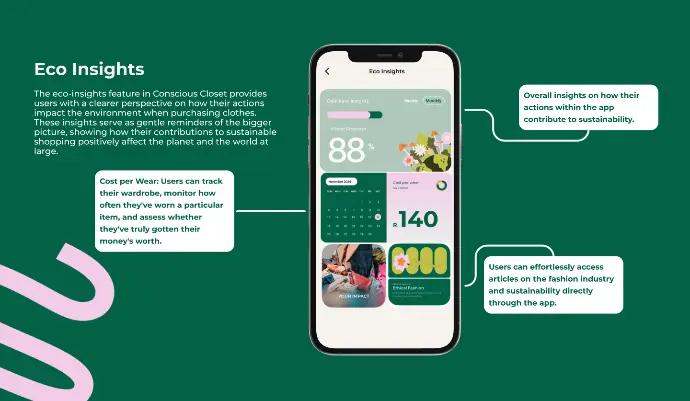Empathise
The first stage of the design thinking process is Empathise, which involves understanding the problems, needs, and emotions of the user.
Observations
To start understanding the issue of overconsumption I spoke to a variety of users that participate in thrifting culture. I went to a local thrifting market where I was able to experience their culture myself and meet both consumers and sellers in the market that allowed me to observe sellers' and consumers' behaviour and perspectives on sustainable fashion alternatives.
Interviews
During my observation at the thrifting market i met many individuals both buyers and sellers and was able to have a seller join my research to gain a better perspective and deepen my understanding of the thrifting community. I then interviewed five participants with varying levels of interest in the problem, gathering consumers' perspectives on overconsumption and sustainable clothing alternatives, as well as interviewing thrift sellers.
3 Consumers 2 Sellers
- 2 out of 3 Buyers - admitted to chasing trends when purchasing clothes
- Trust - This word was used frequently, highlighting how thrifting is still often perceived as "sketchy." Many consumers feel hesitant to buy from sellers they don’t trust, underscoring the importance of building credibility in the thrift community.
- All participants - Expressed the lack of accessibility to shop more sustainably
Key Insights
- Sustainable options are hard to access for both sellers and consumers.
- Consumers want accessible ways to shop sustainably without doing extra research.
- Many enjoy thrifting but struggle to find sellers, often searching on Instagram.
- Sellers find it hard to build trust with consumers on Instagram, where the buying process can feel unfamiliar and sceptical.
- Both groups use Instagram for buying and selling, but the system is challenging, and consumers worry about scams.
Surveys
I decided to conduct an online survey to gather quantitative data on the habits of those interested in thrifting. Using Google Forms, I aimed to identify patterns and similarities, with a total of 23 participants responding to the survey.
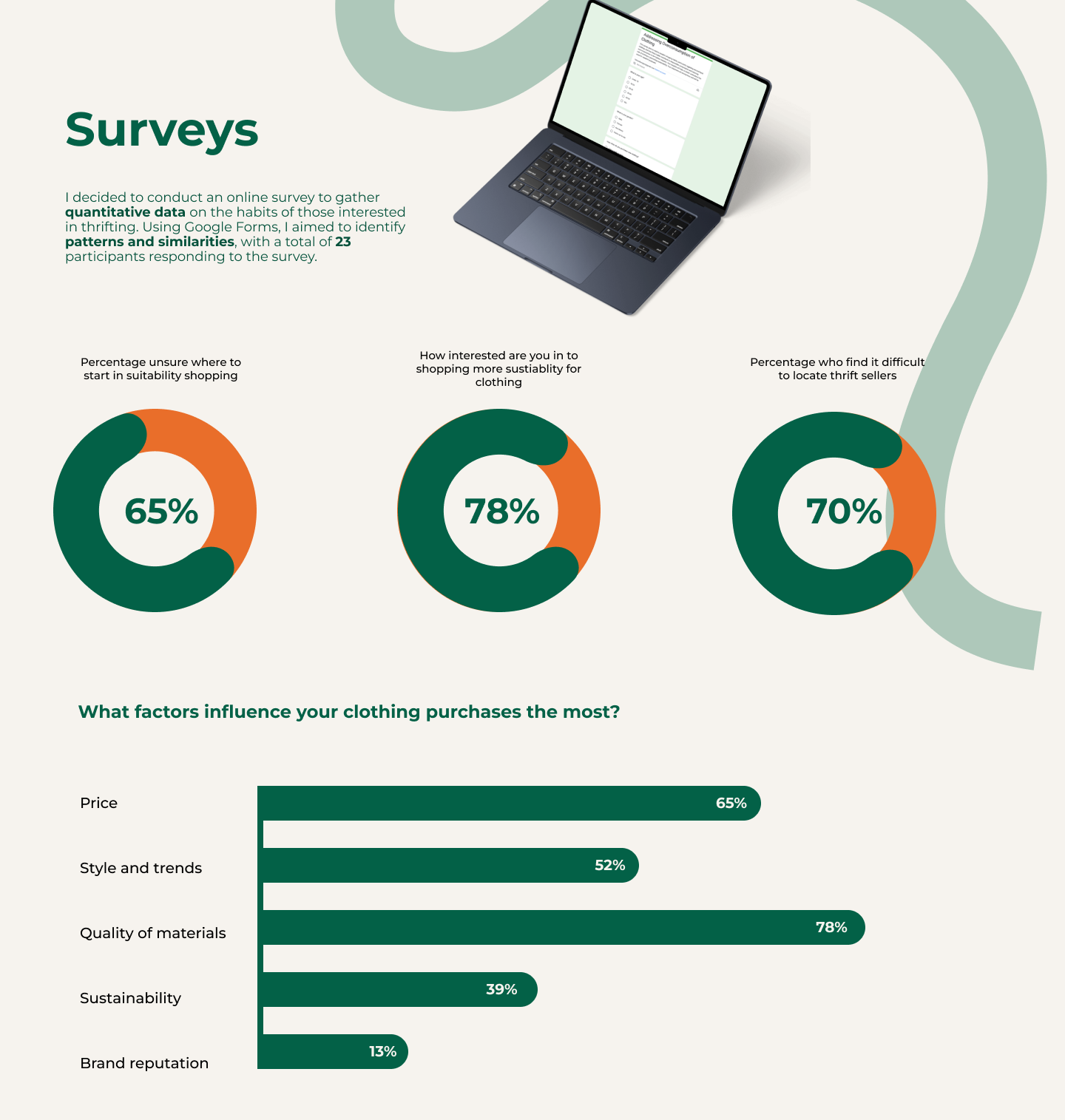
Key Insights
- The research showed a high interest in sustainable shopping; however, many participants find it not accessible enough.
- Many of the participants have thrifted before and enjoyed the experience, but they find it difficult to find thrifters on Instagram.
- About 75% of the participants do not enjoy the Instagram payment system through EFT and the general purchasing experience on Instagram due to concerns about being scammed.
What did we uncover?
After conducting user research, I identified specific pain points that users experience when thrifting in South Africa. Many users want to shop more sustainably but aren’t sure where to begin.
Instagram is a popular platform for sellers, but it's also the main way for them to market and conduct business, which can cause anxiety for both sellers and consumers, especially if they're unfamiliar with the process. By empathising with users and analysing the data gathered, I was able to better understand the unique challenges they face in this space.
Define
The define phase is where, using all the insights gathered from the empathise phase, I was able to reframe the problem.
Problem Statement
The rise of fast fashion has significantly contributed to overconsumption, particularly in clothing (Bick et al., 2018). This issue stems from various factors, including consumers being less mindful of their purchasing habits, corporations capitalising on trends and fast fashion for profit, and shoppers often seeking a dopamine rush without considering more accessible sustainable alternatives (Joy et al., 2012). There is a growing need for a better approach to promote sustainable shopping without compromising fashion choices (Hodgkinson & Hodogendoorn, 2024).
User Personas
From the insights gathered during the empathise phase, I created user personas that included behaviours, goals, pain points, and motivations. These personas served as valuable references as the project progressed.
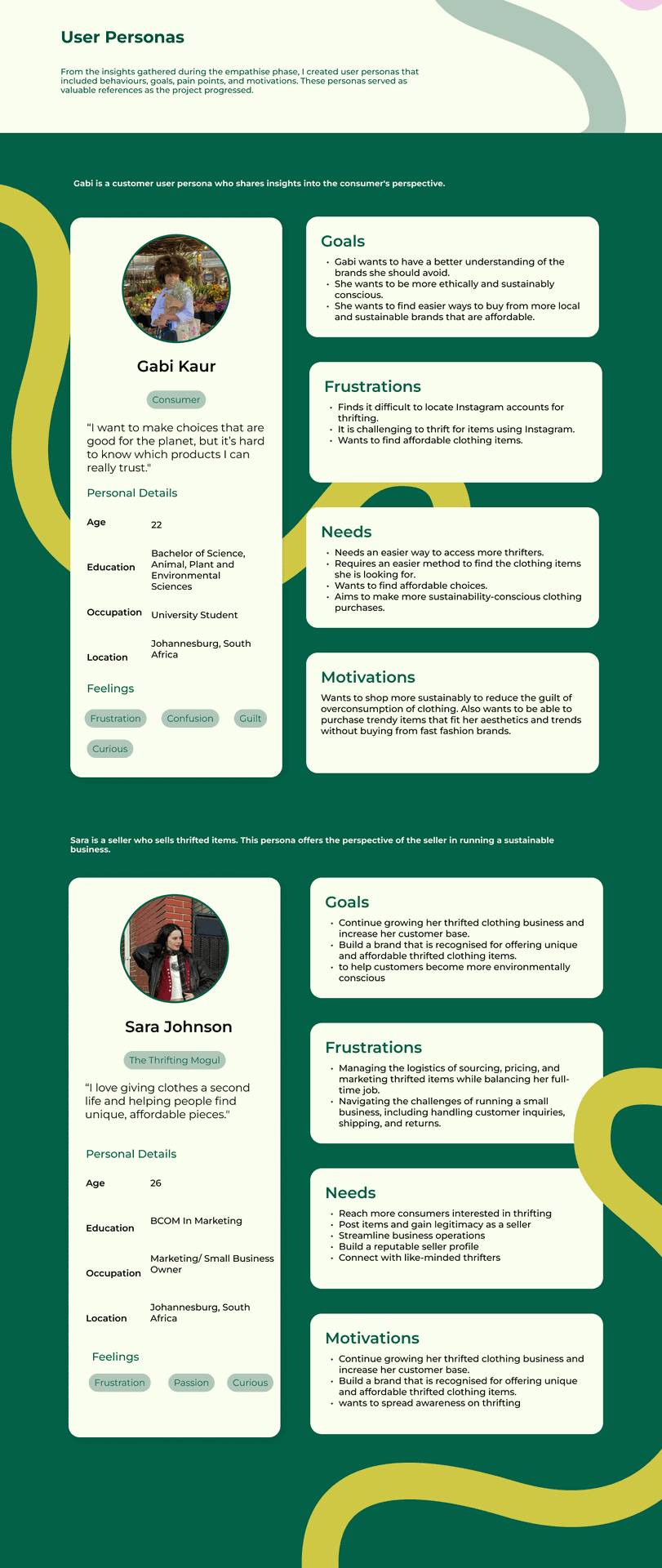
Empathy Map
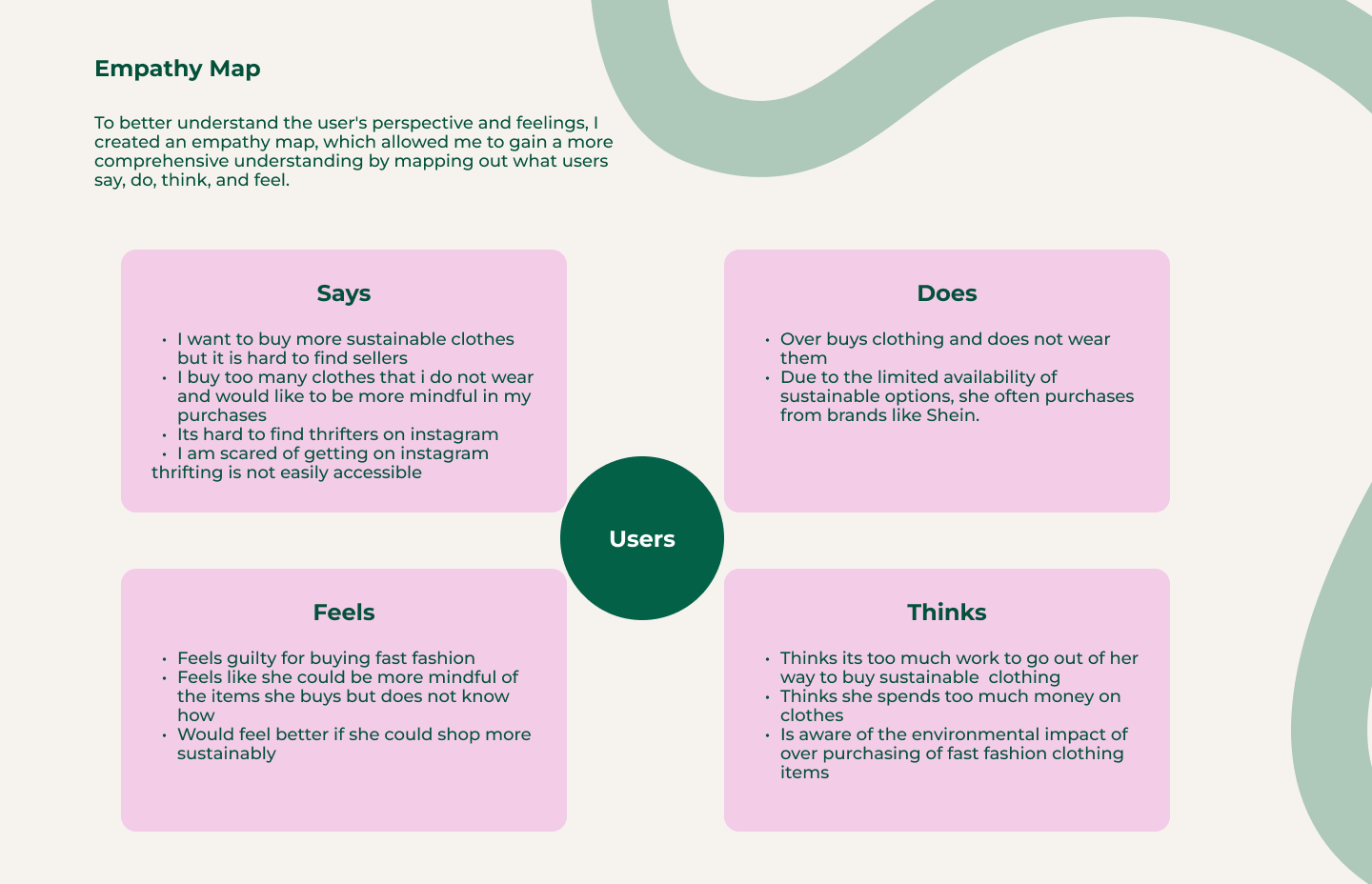
Results of the Define Phase
The define phase allowed me to gain a deeper understanding of both the buyer and seller perspectives. I realised that their views go beyond just buying and selling; for sellers, thrifting is a livelihood, while buyers have a strong passion for fashion. However, the limited availability of sustainable clothing options, combined with economic challenges, has created a cycle of frustration for both groups.
Ideate
In the ideate phase, I brainstormed and developed creative solutions to address user needs and frustrations related to sustainable thrifting.
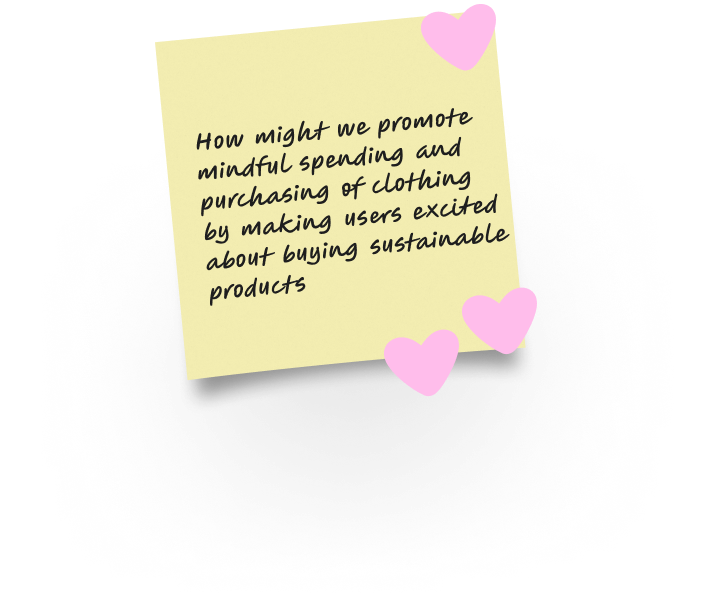
A "How Might We" exercise helps explore different solutions and perspectives. I carried out the exercise with my peers, where we discussed various "How Might We" questions and then voted on the best idea.
Sketches
I created sketches of features that could help address the issues, landing on the idea of creating a digital space for users to easily find thrifters. This space would also include features to help users understand their purchasing behaviour and environmental impact to raise awareness.
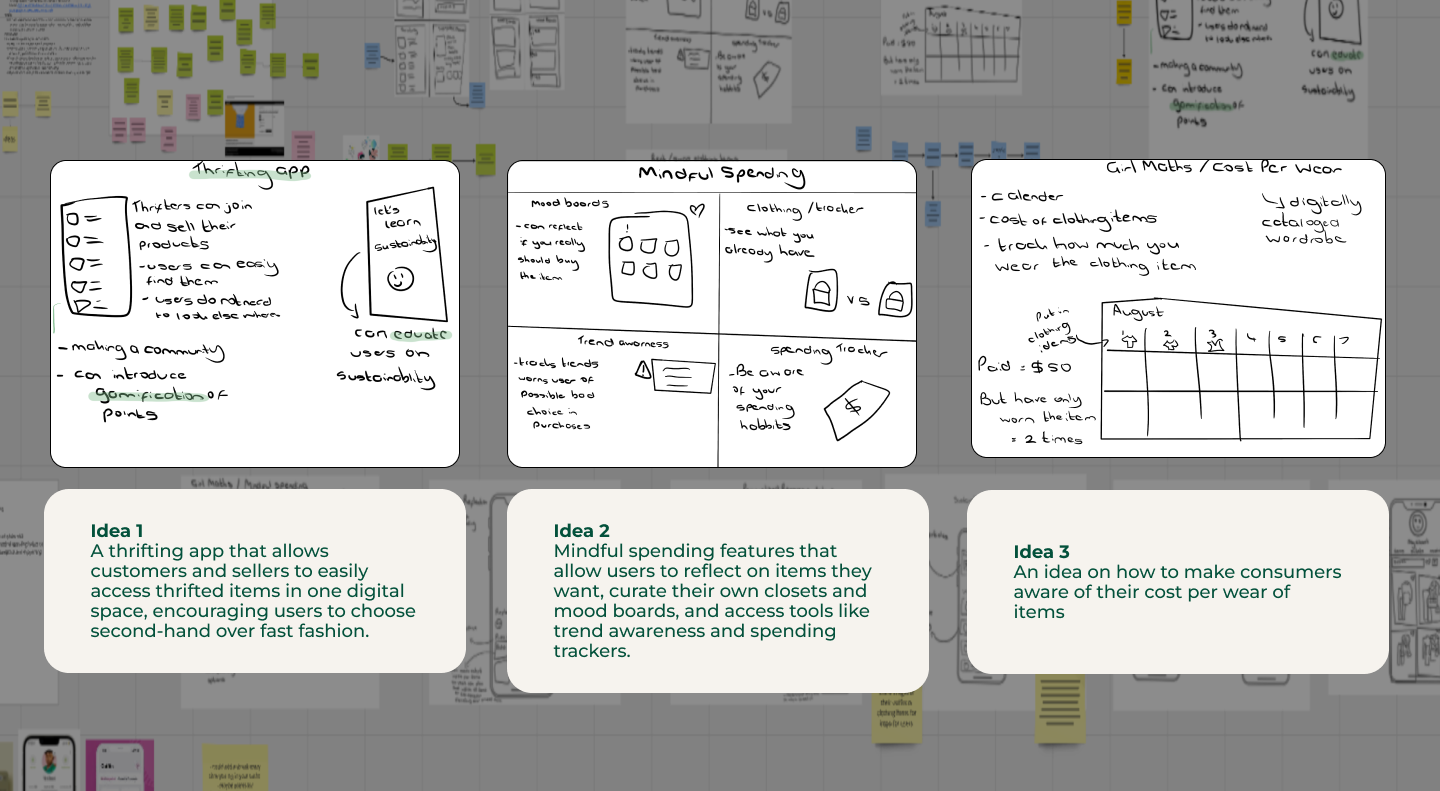
After reviewing all my ideas and user insights, I refined the concepts to cater to everyone and landed on an all-in-one, exciting, and inclusive Thrifting Application that brings the physical marketplace online and in a digital space. Buyers and sellers can seamlessly complete transactions while fostering a sustainable community and being more mindful of their purchases
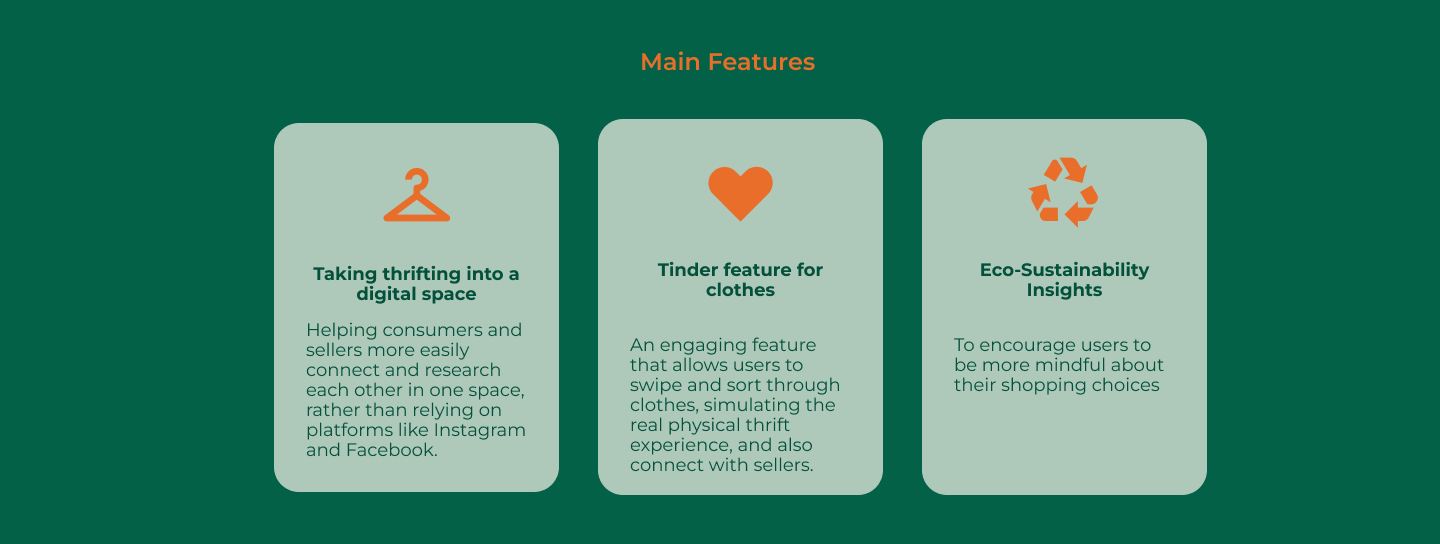
Information Architecture
After ideating and gaining clarity on a solution, I started to gain more of an idea of how the screens, flow, and structure of the app would look like . This led me to create an information architecture to better visualise how users would navigate the application.
User flow
I then created user flows to help me think about how users would navigate the app to buy and sell items and what features would make this process seamless.Although I created several user flows, the buying flow was one of the first I developed. I continued refining it as the user flow evolved, adding more features to support user needs with each iteration.
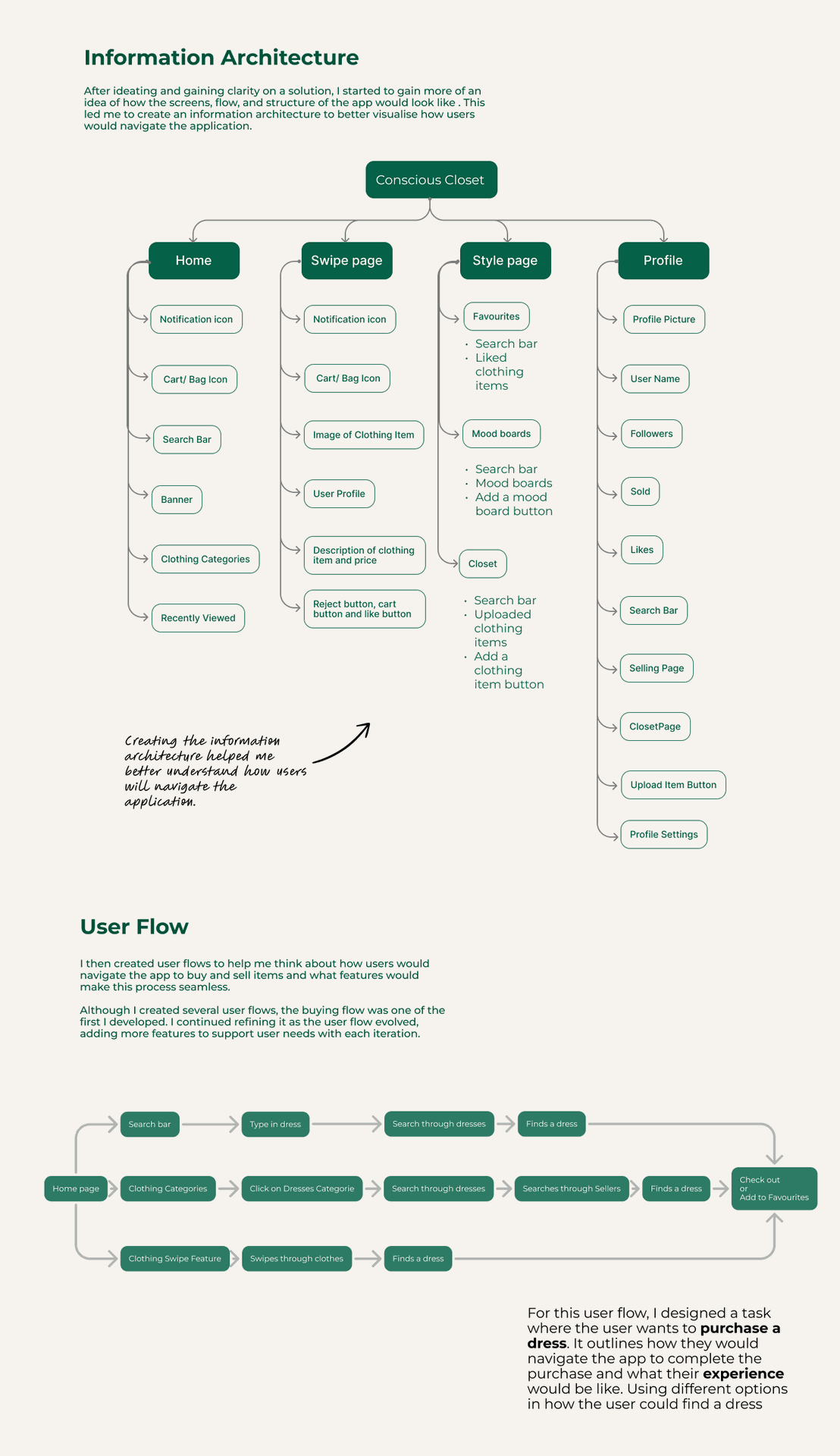
Results of the Ideate Phase
The ideate phase was incredibly helpful and one of my favourite stages. It gave me the opportunity to unpack various solutions by sketching and exploring the multitude of directions the project could take. When I finally reached my "aha" moment, was when I identified features that would address the problem and combined them into one cohesive solution. It was an incredible feeling, knowing that this approach could help both buyers and sellers in so many ways.
Prototype
The prototyping phase was when I began bringing my ideas to life in wireframes, creating a tangible model of the solution to test
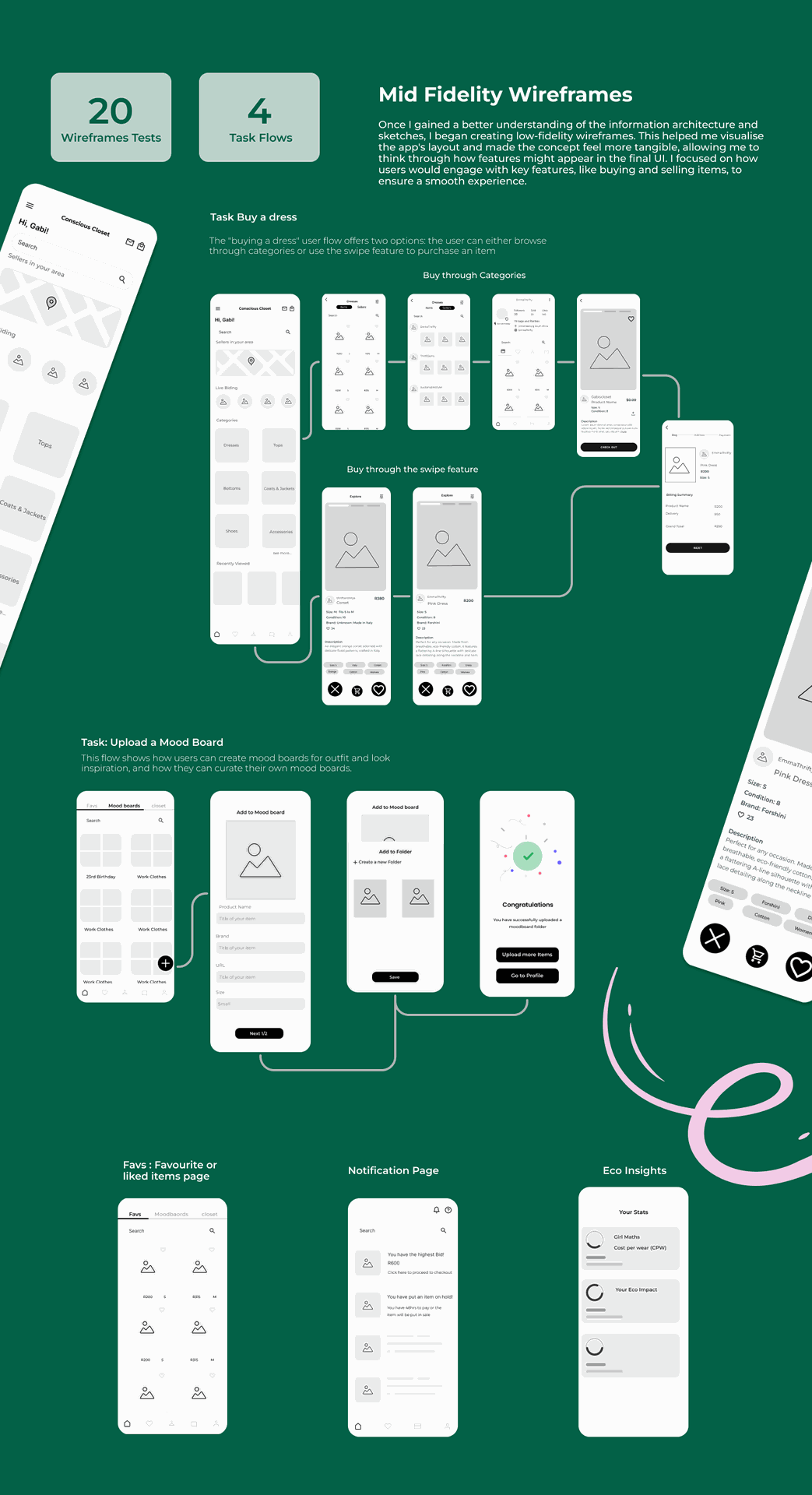
Test
User Testing
Now that I had low-fidelity wireframes, it was important to gather insights and feedback from users to see if they understood my flow and layout. To do this, I conducted 6 user tests and took the participants through my flows and screens. From the user testing, I gained incredible insights from both the buyers and sellers.
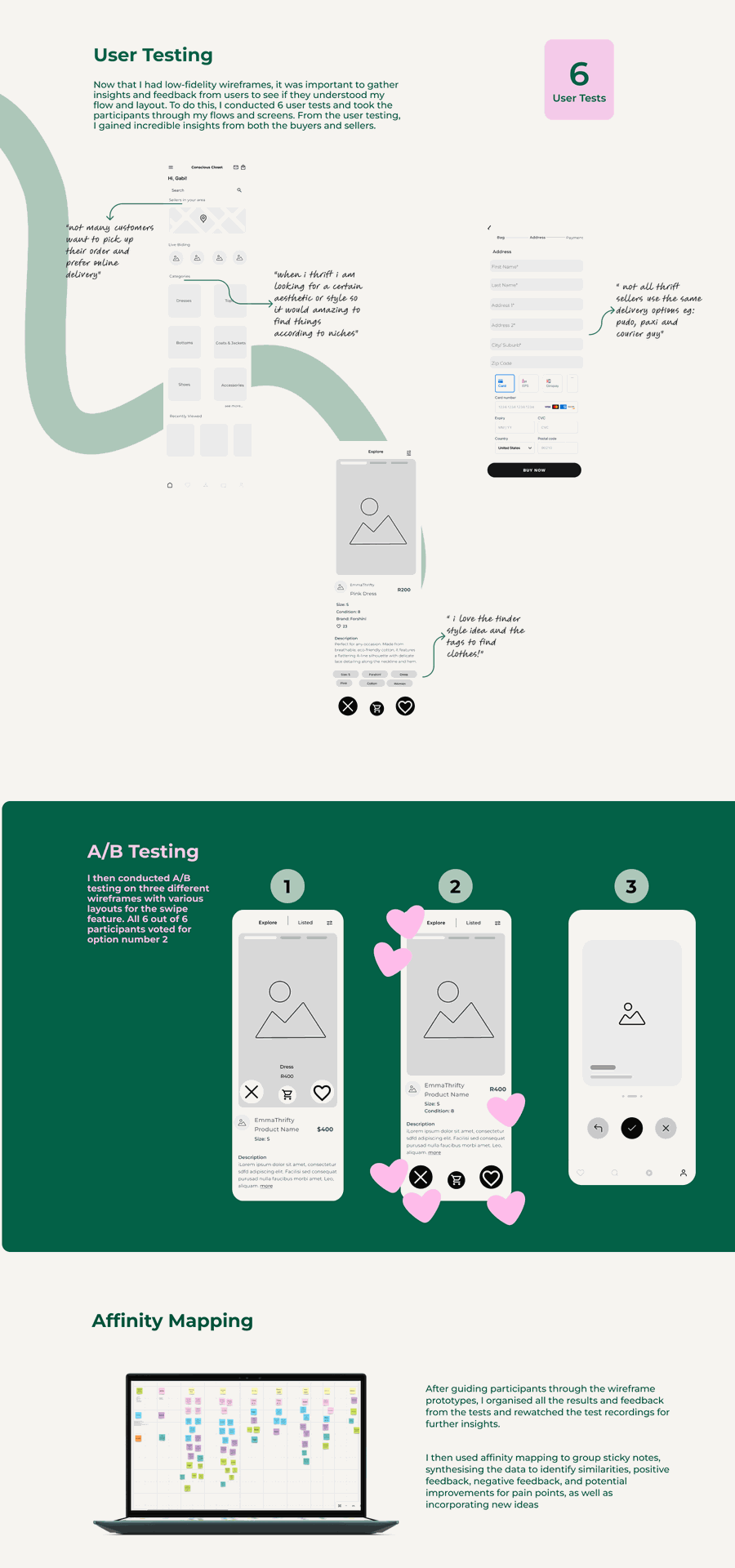
Results
I received mostly positive feedback on the app overall, with fewer negative comments, which was encouraging to hear. Certain features needed adjustments to improve navigation. Participants who were sellers provided the most valuable insights, especially in refining the payment system and understanding how their own customers might use specific features
Design System
I created a design system that ensures consistency and a unified experience across the entire application. This serves as a set of guidelines that streamlines the design process and ensures every element, from buttons to typography, aligns with the overall brand of the application.
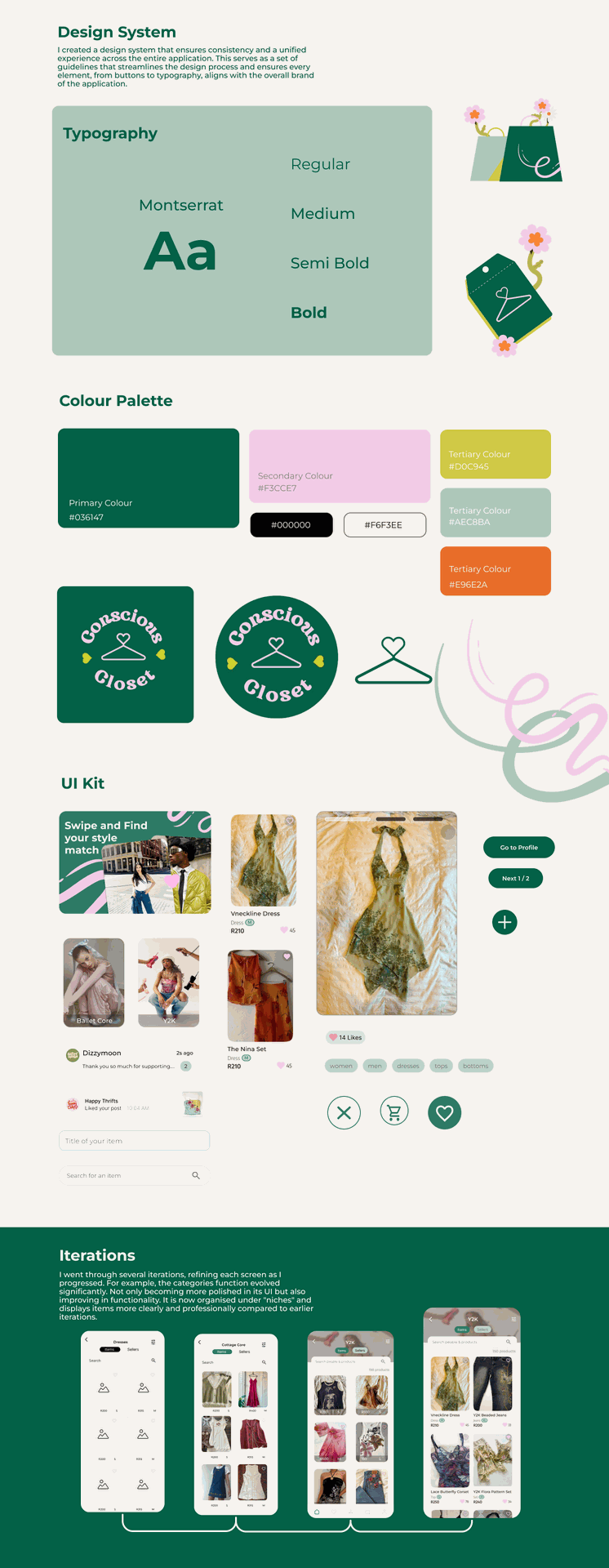
Conscious Closet
The final solution focuses on creating a cohesive space for buyers and sellers to connect, fostering a sense of community. By offering innovative features like niche categories, a Tinder-style swiping interface, and mindful purchasing features, the app not only simplifies thrifting but also encourages sustainable shopping habits.
